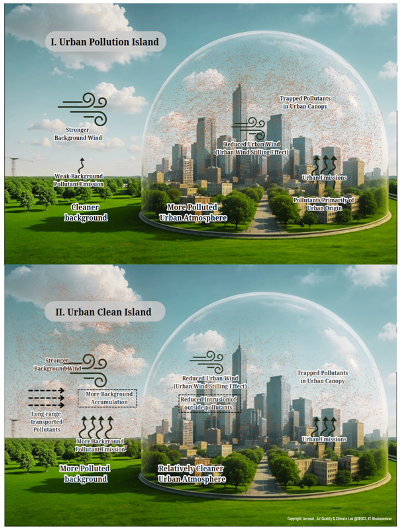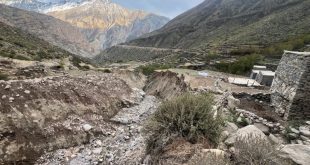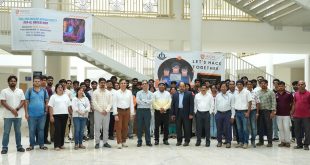Bhubaneswar: As governments across the globe intensify efforts to curb urban air pollution—a pressing crisis linked to serious health risks—a groundbreaking study from India is challenging long-held beliefs about how pollution behaves in urban environments.
India’s own National Clean Air Program (NCAP) is at the forefront of the country’s battle against deteriorating air quality, especially as urbanization accelerates. Now, new research by Dr. V. Vinoj, Associate Professor at the School of Earth, Ocean and Climate Sciences, and research scholar Soumya Satyakanta Sethi from the Indian Institute of Technology (IIT) Bhubaneswar, published in Nature Portfolio Journal Communications Earth & Environment, presents surprising insights that could reshape air quality strategies across India and beyond.
Rethinking the ‘Urban Pollution Dome’
Traditionally, cities have been viewed as hotspots for air pollution, forming what’s known as an “urban pollution dome” or “urban pollution island,” where pollution levels are higher in the city center compared to surrounding rural areas. However, the IIT Bhubaneswar study, based on two decades of high-resolution aerosol data from 141 cities, suggests that this pattern does not always hold true—especially in northern Indian cities.
Instead of showing concentrated pollution over city centers, many cities in northern and northwestern India are displaying what researchers describe as a “punctured pollution dome” or a “clean island” effect. Surprisingly, the city centers in these regions are often cleaner than the areas surrounding them.
The Science Behind the Clean Air Paradox
What could be causing this counterintuitive phenomenon?
Researchers point to a city’s physical structure—its dense, uneven surface made up of tall buildings and narrow alleyways—as a key factor. These structures form an “invisible barrier” that slows down wind movement and creates pockets of stagnant air, contributing to pollution build-up inside cities, characteristic of the classic pollution dome.
However, this same barrier can also prevent polluted air from entering the city. In regions like the Indo-Gangetic Plain, where regional and long-range pollution sources (like dust and industrial emissions) are prevalent, the city’s “rough” boundary can block external pollutants from infiltrating urban cores. As a result, the pollution accumulates around the city rather than inside it—leading to the formation of cleaner air zones in city centers.

Southern Cities Follow the Classic Pattern
In contrast, southern Indian cities, which are less affected by long-range pollution, tend to exhibit the traditional dome effect, with higher pollution levels within the city compared to surrounding areas. The absence of significant regional pollution in these cities reinforces the classical urban pollution model.
Implications for Air Quality Monitoring and Urban Planning
These findings have far-reaching implications. They challenge the long-standing assumption that transported aerosols merely accumulate over cities and uniformly degrade air quality. Instead, urban air pollution is a dynamic process influenced by a complex interaction between local emissions, regional transport, microclimatic conditions, and urban design.
Importantly, the study underscores the limitations of current air quality monitoring practices, which often rely on data from stations within city boundaries. As the study reveals, a complete picture of air pollution dynamics must include the surrounding non-urban areas as well.
A Roadmap to Sustainable Urban Futures
Understanding these hidden atmospheric mechanisms is only the first step. To build truly sustainable and climate-resilient cities, policymakers and urban planners must embrace a more integrated approach to urban environmental management.
In this context, IIT Bhubaneswar is pioneering urban digital twin technologies—sophisticated virtual models of cities that can simulate and analyze multiple environmental scenarios in real-time. These digital twins could revolutionize urban planning by allowing cities to model not just air quality, but also heat stress, changing rainfall patterns, flooding risks, and broader climate change impacts.
 Update Odisha-Latest Odisha News I Breaking News Get latest news on Odisha, Govt. Jobs, OSSC, OPSC, Entertainment, Crime, Sports, and Education
Update Odisha-Latest Odisha News I Breaking News Get latest news on Odisha, Govt. Jobs, OSSC, OPSC, Entertainment, Crime, Sports, and Education



